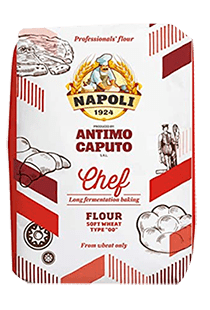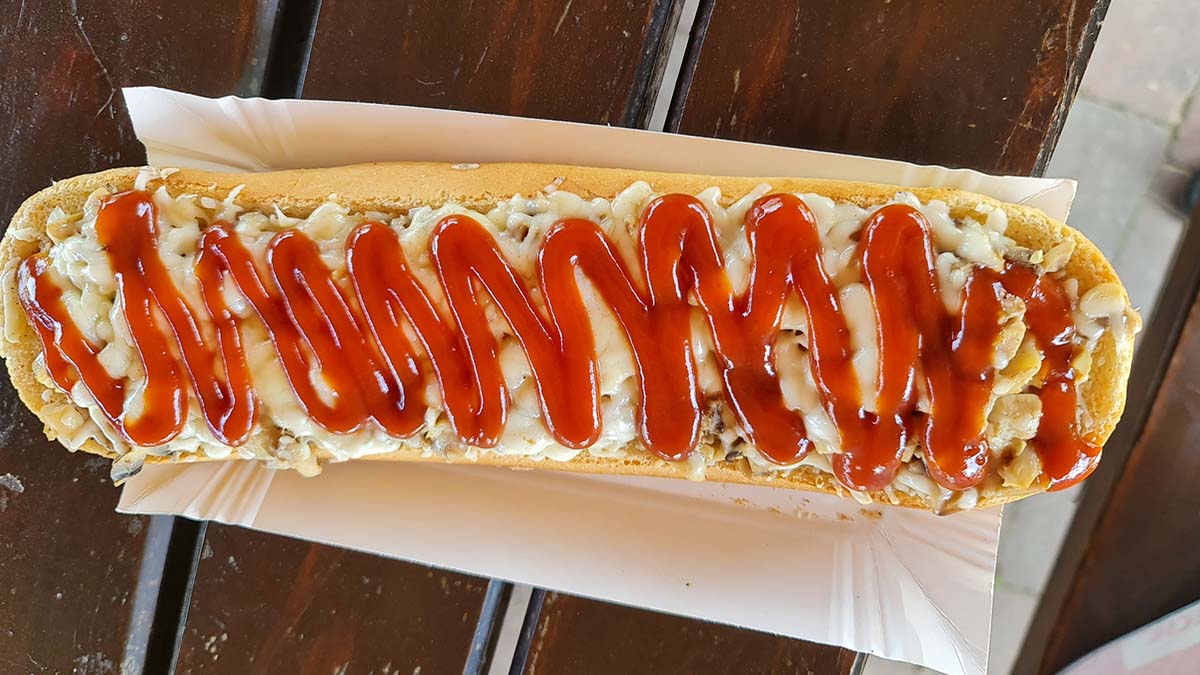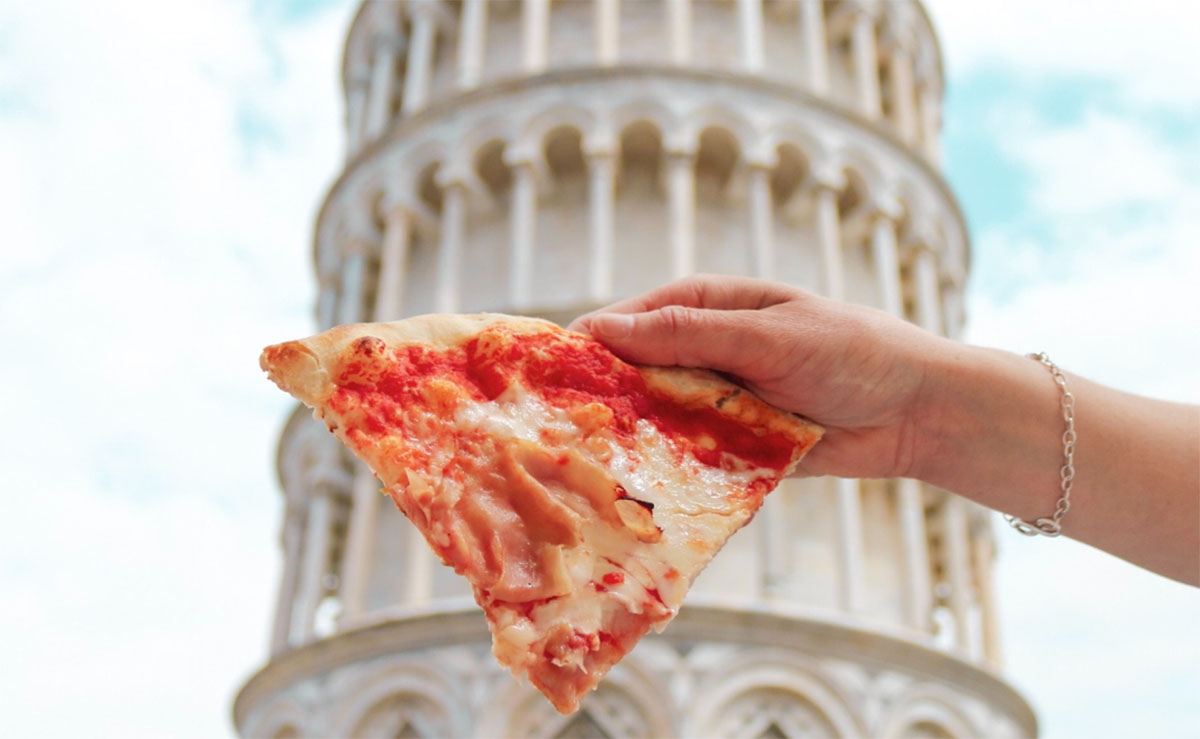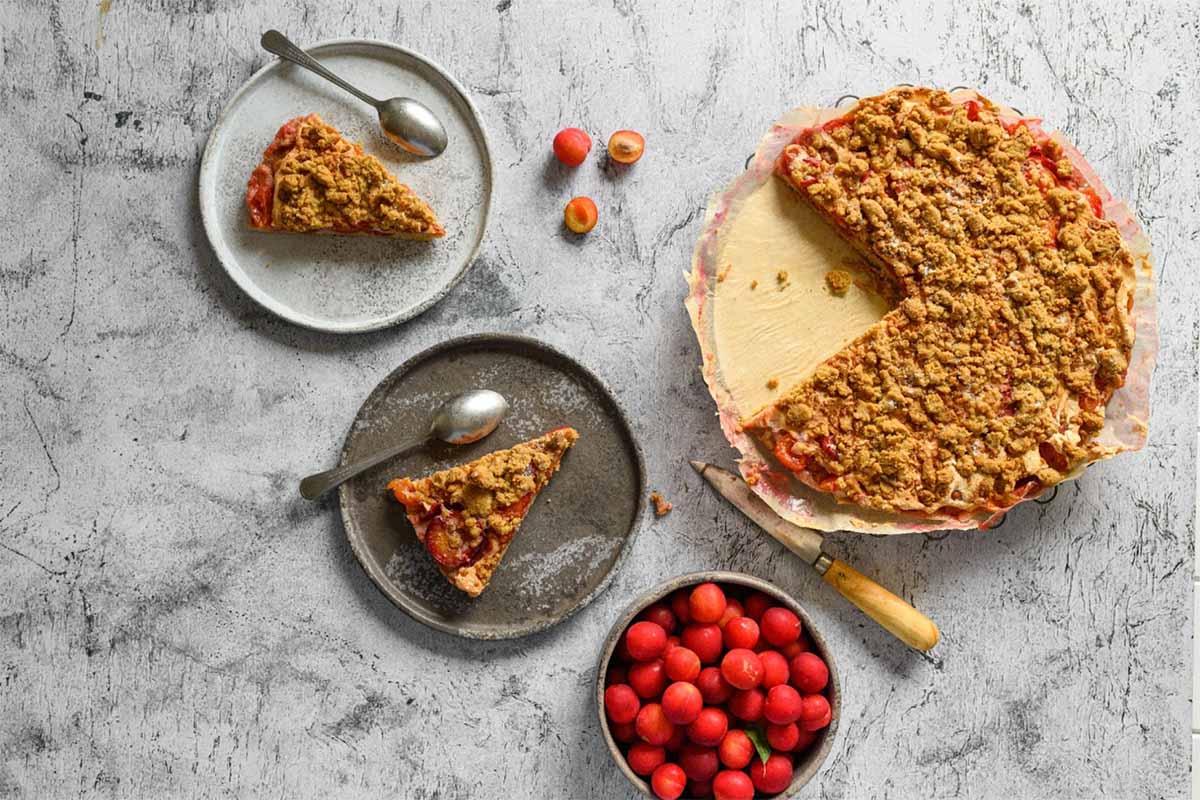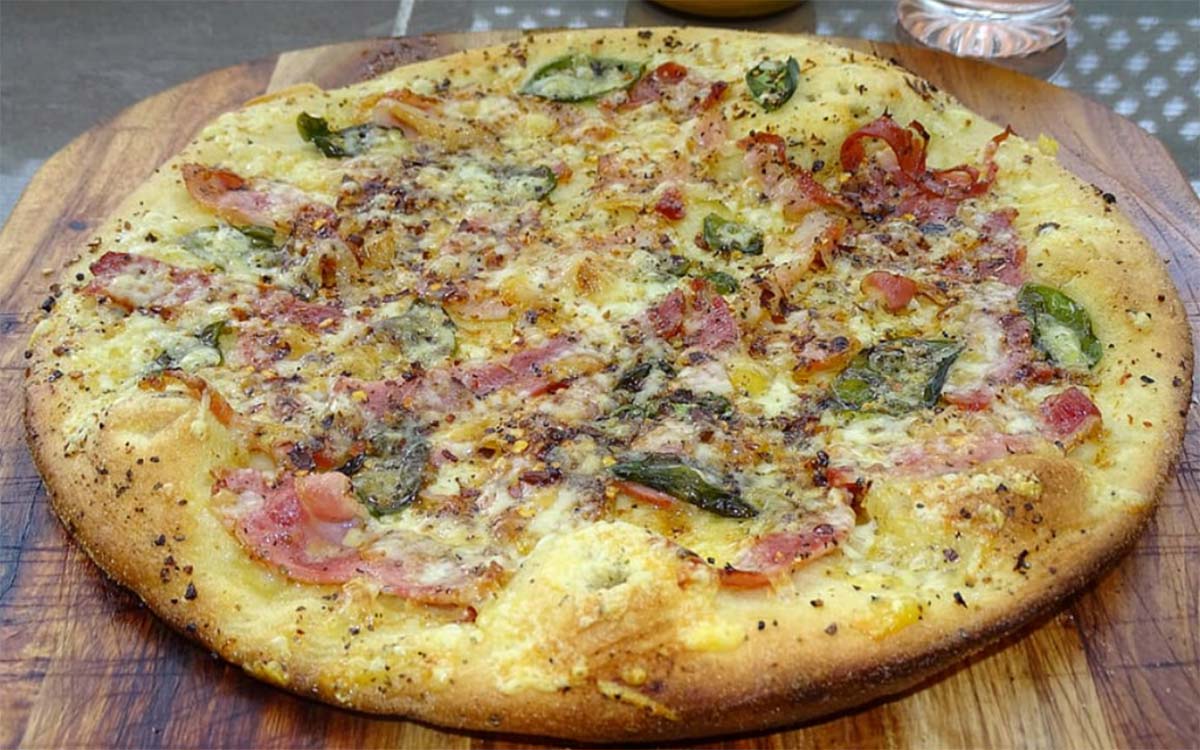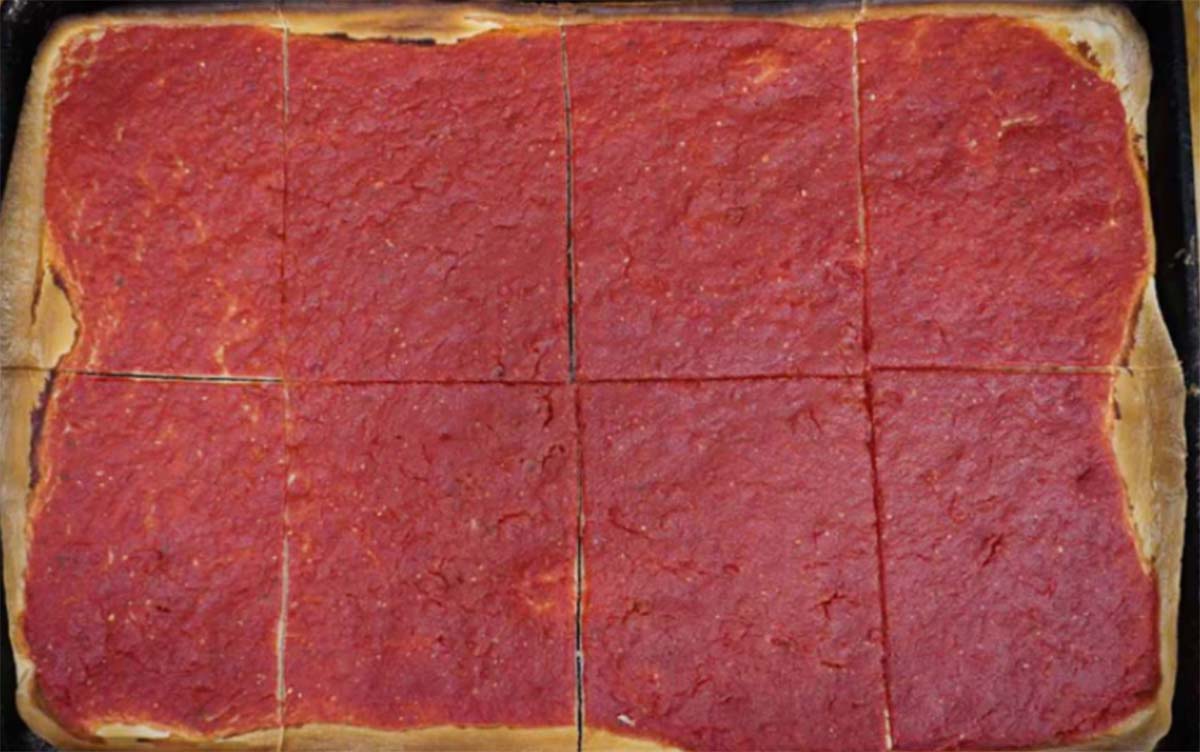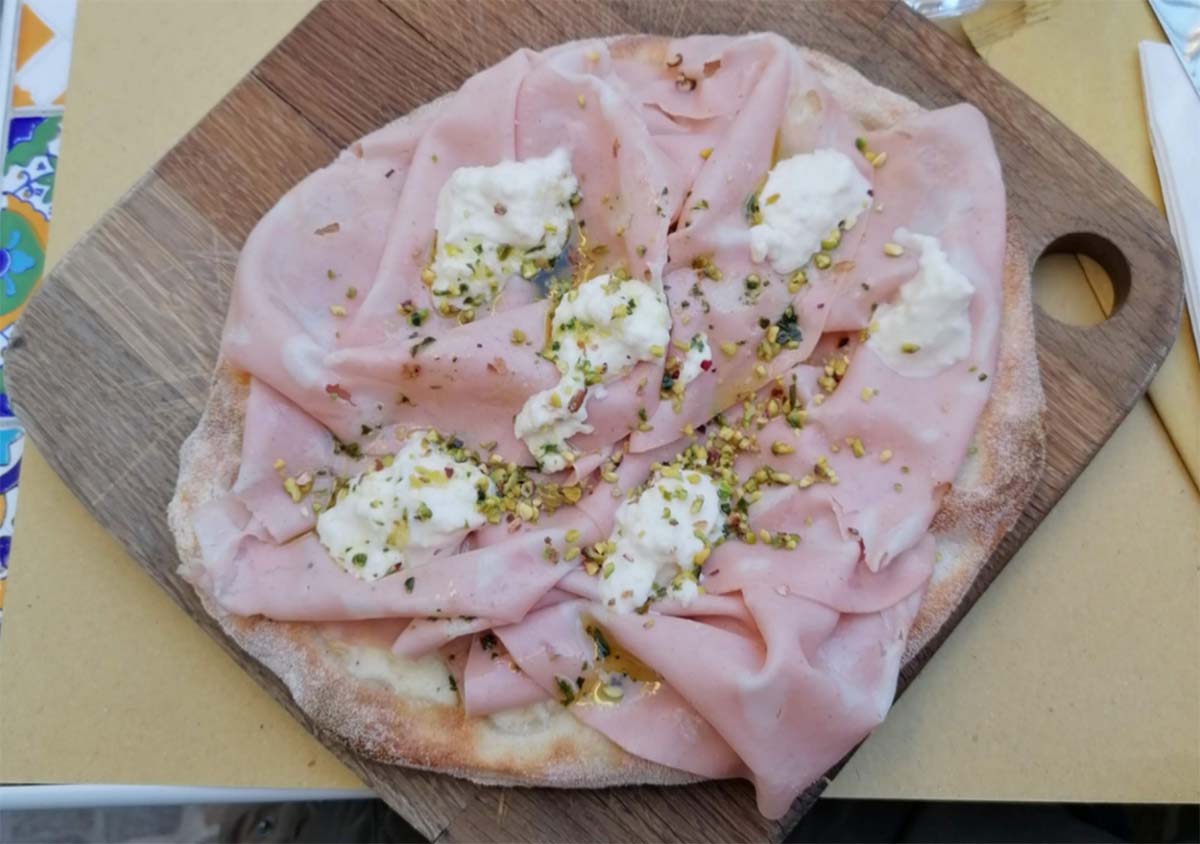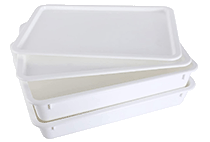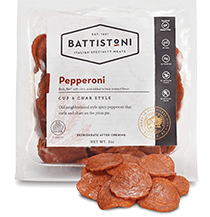Pizza is amazing food, and you can find different versions of pizza everywhere. Yes, pizza originally comes from Italy, where it has a long history, but it has quickly spread throughout the world.
We love to travel and try pizza wherever we go. And one thing we learned is the differences between American and Italian pizzas. We aren’t here to debate the merits of each one. We love them both. So let’s celebrate their differences.
Key Takeaways:
- Italian pizza is made with 00 flour, which makes a lighter and more digestible crust, while American pizza uses all-purpose flour and has a heavier crust.
- In Italy, one pie is ordered per person, and the pizza is not cut when served. In the US, there are larger pies, and the pizza is cut into slices and shared.
- Italian pizza has simpler toppings, while American pizza has many combinations of toppings. Italian pizzerias serve pizza with few extras, while American pizzerias have crushed red pepper, black pepper, powdered Parmesan, and Italian seasonings on the table.
Table of Contents
Whether it’s a piping hot American pepperoni pizza or a bubbling Italian Neopolitan pizza, we are excited to dive in. In the spirit of learning, let’s take a look at some of the differences between American and Italian pizzas.
Dough / Impasto
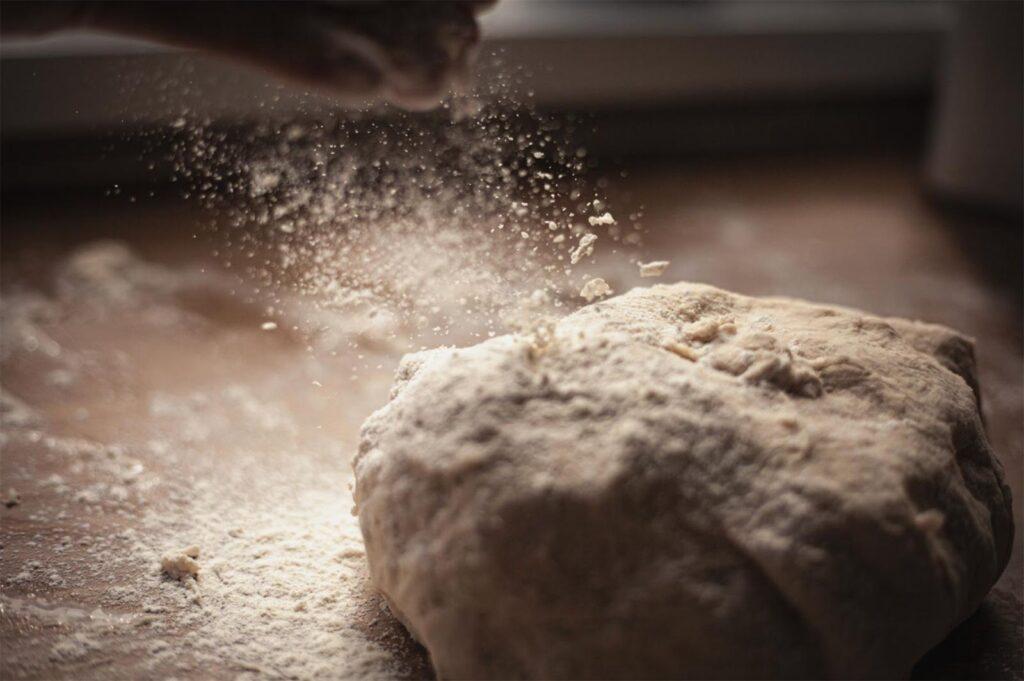
Let’s start at the beginning, the dough. Italian pizza is made with 00 flour. This type of flour is refined and is almost the consistency of baby powder. It is made from refined grains which give it a puffed-up look when cooking.
According to Italian pizzaiolos, using this flour makes all the difference because the 00 flour makes a lighter and more digestible crust. In addition, the high gluten content makes it easier to stretch and create a crispy-chewy crust.
American pizzas use all-purpose flour and, in some cases, bread flour to make pizza dough. The American style of pizza has a heavier crust, so you can really sink your teeth into it.
In the U.S., pizza lovers have an endless array of choices for their crust from the stuffed crust to the herbed crust, flaky croissant crust, thin crispy cracker-like St. Louis style crust, and deep saucy thick Chicago crust. We’re also particular to Minnesota tavern style pizza with cheese over the toppings.
There are so many crust choices in the U.S., but in Italy, you just don’t see that extensive variety of crusts.
Serving Size and Style
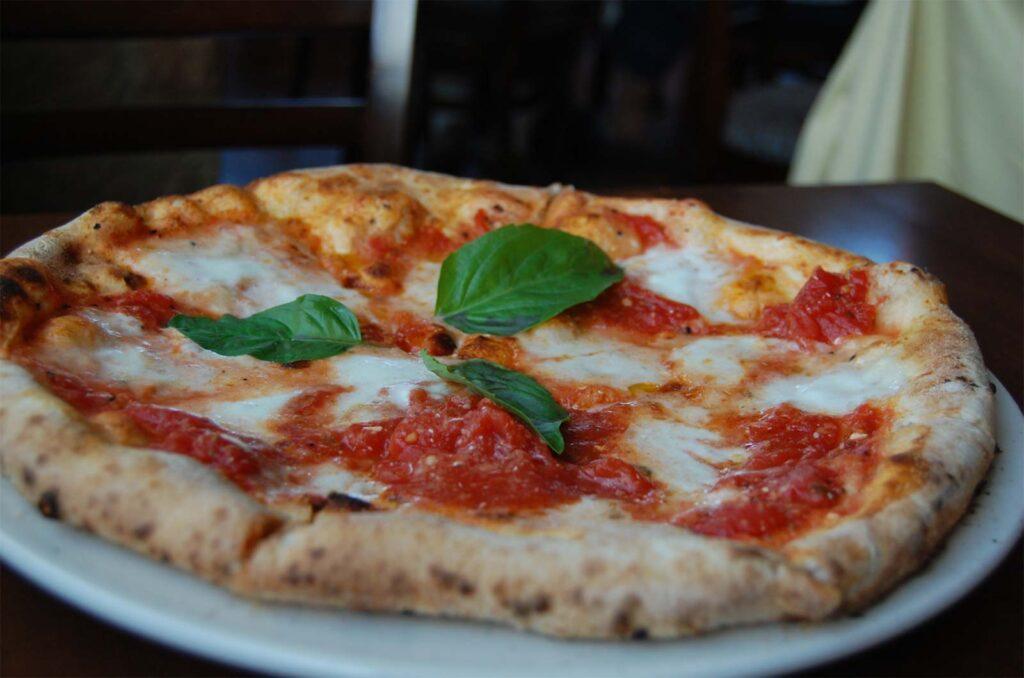
When you go into a pizzeria in Italy, you order one pie per person. Italian don’t argue over which toppings and who likes peppers or who is allergic to mushrooms. It’s one pie per person. Each pizza is exactly what each person wants. It’s a beautiful thing.
And that really goes back to the crust because Italian pizza has such a thin crust that a pizza in a single serving. In Italy, you don’t have to be embarrassed that you ate the whole thing. You are supposed to eat the whole thing.
Another key difference is that when the pizza is served it isn’t cut. In Italy, folks sit down and enjoy their food with a knife and fork. Pizza is Italy’s version of fast food, but it is still Italy, and even while enjoying an inexpensive meal, they are still cultured about it.
In the U.S., there are large pies, extra-large pies, and family pies because we share. We negotiate the topping with our friends and family, and after finally deciding on a pie, we are served a pie sometimes bigger than the table.
The pizza is cut with a pizza cutter into slices, and everybody gets a slice or two or three. We use our hands, and it’s a real sensory experience. Cheese stretches from our lips, and our fingers get greasy, and pizza night is a real treat.
Tomato Sauce / Salsa di pomodoro
Italian pizza uses a light tomato sauce to match the lighter crust. It is usually a fairly simple sauce of crushed tomatoes and herbs. It has a lighter flavor profile to really let the other toppings shine.
American pizza usually has a thicker tomato sauce that’s been cooked for hours. The sauce is heavier in density and heavier in flavor. It’s common for American pizza sauce to have a mix of herbs and a bit of sugar to contrast the acidity of the tomatoes.
In Italian American households, they often simmer a pot of sauce, either referred to as ragu or gravy and that is an all purpose sauce that works on pizza, pasta, calzones, lasagna, and all the other delicious Italian food. We love both the lighter, fresher Italian style and the heavier American sauce.
If you aren’t sure which one you prefer, you can always try your hand at making a red sauce at home and see which one your tastebuds prefer.
Cheese / Formaggio
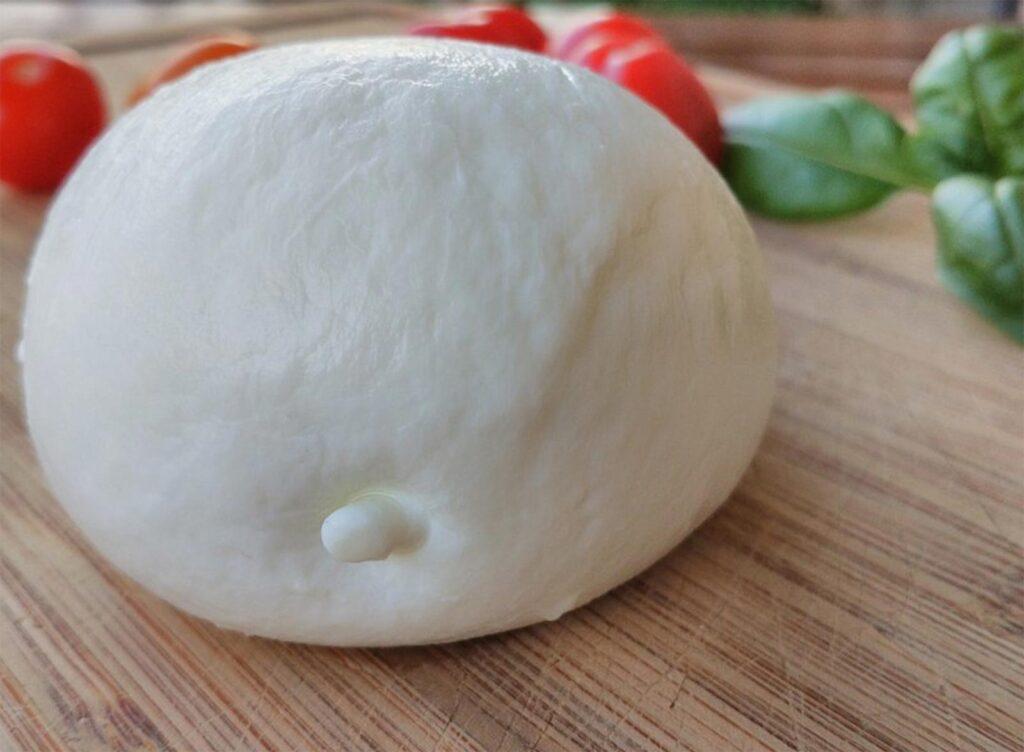
Another one of the differences between American and Italian pizzas is the cheese. In Italy, pizza is made with fresh mozzarella, usually a buffalo mozzarella. The mozzarella balls are soft and are packaged in water. They are sliced and laid out on the pizza like another topping.
Occasionally you might see other cheeses on a pizza, especially in bigger cities. You might find a fontina or Gorgonzola but most traditional pizzerias stick with the mozzarella.
In contrast, in the U.S., many pizzerias use a pre-shredded mozzarella or blocks that they grate themselves. Cheese covers the whole pie from crust to crust. Toppings are layered on, and another sprinkle of grated cheese covers it.
Sometimes the cheese is a mozzarella blend with provolone and other cheese mixed. Some creative pizza places use Feta, blue cheese, fresh Parmesan, and other combinations.
To be honest, we love both styles of cheese, but when we make pizza at home, we try and avoid using pre-shredded cheeses. The reason is that the manufacturers treat the cheese with something to keep it from sticking together, so when you use it on pizza, it has an almost plastic look to it and rarely melts well.
Of course, pre-shredded cheese is convenient and can save you time in the kitchen, but if you have the time, use it freshly grate your cheese, or if going the Italian route, slice the cheese.
Toppings / Condimenti
Ok, so let’s take a look at toppings. Italians like pizza with simpler toppings. You won’t find a meat lover’s pizza. No piles of sausage, pepperoni, and ham; instead, their pizzas have fewer toppings, so you can really taste all of the flavors.
Of course, the quintessential Italian pizza is the Margarita pizza, a simple cheese with basil. Th cheese is fresh buffalo mozzarella and tangy basil. It’s simple and perfect.
But that’s not the only pizza flavor. Some popular pizza topping combinations in Italy are prosciutto e fungi, Proscuitto ham or burrata y mortadella, guanciale and fig, hot giardiniera, and mushrooms. It’s simple, earthy mushrooms and a salty and aged prosciutto.
Each topping has its place, and they blend together well. Another popular pizza is the Capricciosa which translates to capricious. This pizza has artichokes, mushrooms, and ham. Some places add olives, too, depending on the region of Italy. Again simple flavors that don’t overpower each other.
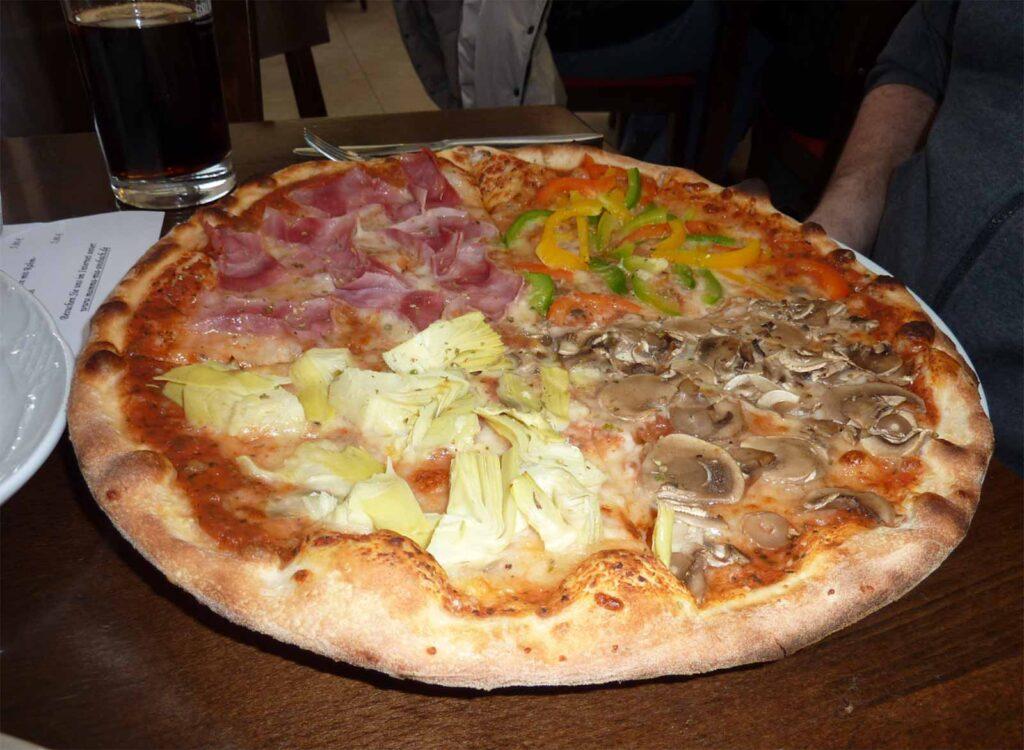
Another popular Italian favorite is the Quattro Stagioni pizza. This translates to the four seasons. This pizza is divided into four parts, and each part represents one of the four seasons. A fourth of the pizza has artichokes that represent Spring.
A fourth has San Marzano tomatoes and basil representing Summer. And a fourth has mushrooms representing Autumn, and a fourth has prosciutto and olives representing Winter. And remember, you don’t have to share your pie, so you get to enjoy each pizza season and eat the whole year.
American pizzerias are extravagant and indulgent. There are many combinations of toppings. You can get the typical pepperoni or Supreme or Hawaiian. Pizza lovers can even get exotic Thai chicken pizza, BBQ pizza, Mexican pizza, Hamburger pizza, and if none of those suit you, you can build your own pizza.
Americans are independent and want their pizza their way, and the pizzerias have to make them. If I go in an American pizzeria and get jalapeños, pineapple, and half sausage and half pepperoni with blue cheese, nobody will bat an eye.
In Italy, if you tried to order like that, you would get a swift lecture about the sacredness of pizza, possibly a mamma mia would be exclaimed, and they will serve you a Margarita pizza while still lecturing you about pineapple.
Table Condiments / Condimenti di tavola
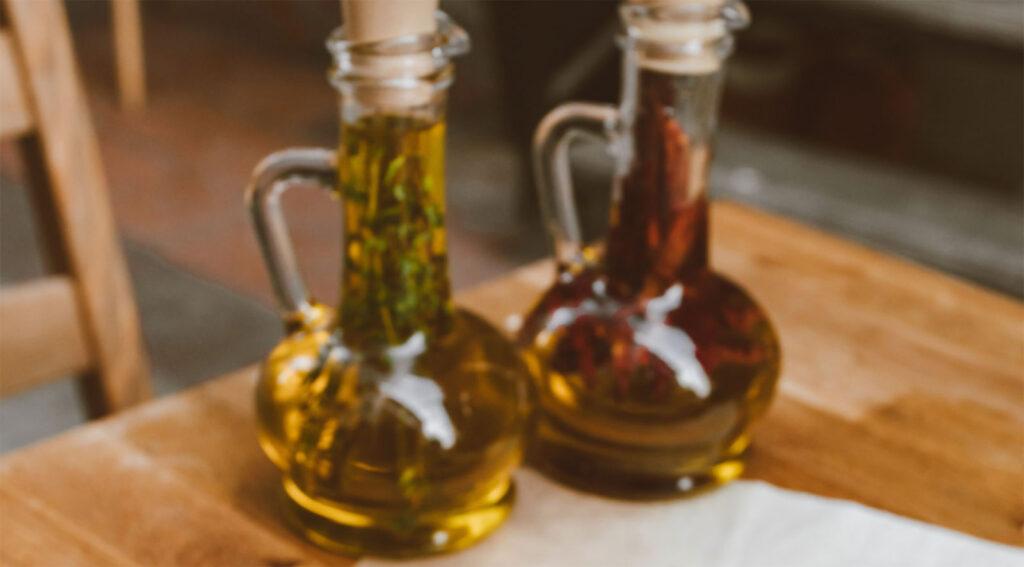
Pizzerias in Italy serve pizza with few extras. Tabletops usually have herb and spice-infused olive oil to drizzle on your pizza. They don’t have crushed red pepper or powdered Parmesan cheese. The philosophy is simple the pizza is enough.
The one exception to that is for kids. We have seen kids cover their pizzas in French fries while their parents dine without batting an eye.
An American pizzeria has crushed red pepper, black pepper, powdered Parmesan, Italian seasonings, and not a drop of olive oil in sight. Some American pizzerias have a selection of dipping sauces, yes, dipping sauce to dip your pizza in.
We’ve seen dipping sauces of Ranch, honey mustard, BBQ sauce, and even hot and sour. That’s the American way take something delicious and make it better.
Other Differences Between American and Italian Pizzas
Italian Restaurant Hours
There are a few other differences between American and Italian pizzerias that you may notice when you visit. Italian pizzerias are open in the evening. Most restaurants in Italy are open for lunch hours, then close and reopen for dinner hours.
Pizza is usually considered a dinner food and is rarely seen on a lunch menu. Italians generally have their big meal of the day in the afternoon between 2 and 4 like many other Mediterranean countries.
Their lunch is a starter, usually a thin soup, then wither pasta or rice dish as the primo piatto and a secondo piatto is a protein like beef, chicken, or fish with some vegetables. It’s quite a meal. Dinner is lighter, and pizza is considered a lighter meal.
Dining In vs. Delivery
Delivery pizza is relatively new to Italy. While pizza is considered an inexpensive, fast food, it’s still usually a sit-down dine-in affair. Some busy families will order pizza and come pick it up, but many prefer the event of going out for a pizza.
Traditional Italian pizza should be served hot fresh from the oven, and transporting it can leave a messy gooey mess. Some pizzerias don’t even offer take-out or delivery because they don’t think they can give the customers a quality pizza if it’s not in their dining room right out of the oven.
Of course, in the U.S., delivery has been around for decades. Pizza delivery is how young adults get sustenance while in college. It’s the favorite party food. Every family has their favorite delivery spot and their number on speed dial.
Common Ground

Despite the differences between American and Italian pizzas, there is one thing that both countries have in common, and that is what we wash our pizzas down with…beer. Beer and pizza go together like peanut butter and jelly. Everyone knows it, and no one can deny it.
Usually, Italians prefer wine with their meals, but pizza is the exception. Most pizzerias will have a variety of lagers and ales on tap to enjoy with your pizza. If you aren’t sure which pizza and beer combinations work best together, you can check out our short guide on pairing beer and pizza.
There are so many beers to choose from in the states, and there really aren’t any rules about food, so many people drink soda or mineral water with their pizza. And then there are the outliers that drink wine with everything.
If you are one of those wild cards that love wine with anything on the plate, you can check out our guide on wine and pizza pairings to find the perfect pinot or Merlot to match your favorite pizza flavors.
So while pizza is pizza and delicious any way you have it, there are some differences in how the Italians, the traditional inventors of pizza make their pizzas versus how the Americans have taken their amazing food and created something new.
The best version of a mix of the two styles is New York pizza. New York pizza is a unique style of pizza that the early Italian immigrants brought to the U.S. and is the best of both worlds. It has a thin crust like Italy, a heavier sauce like American, fresh mozzarella like Italy, and any toppings you can think of because it’s America, and we are free to put weird things on our pizzas whether they make sense or not.
Honestly, we love both styles of pizza. We love to celebrate different styles of pizzas and the cultures that make them.
What’s your favorite style of pizza?

